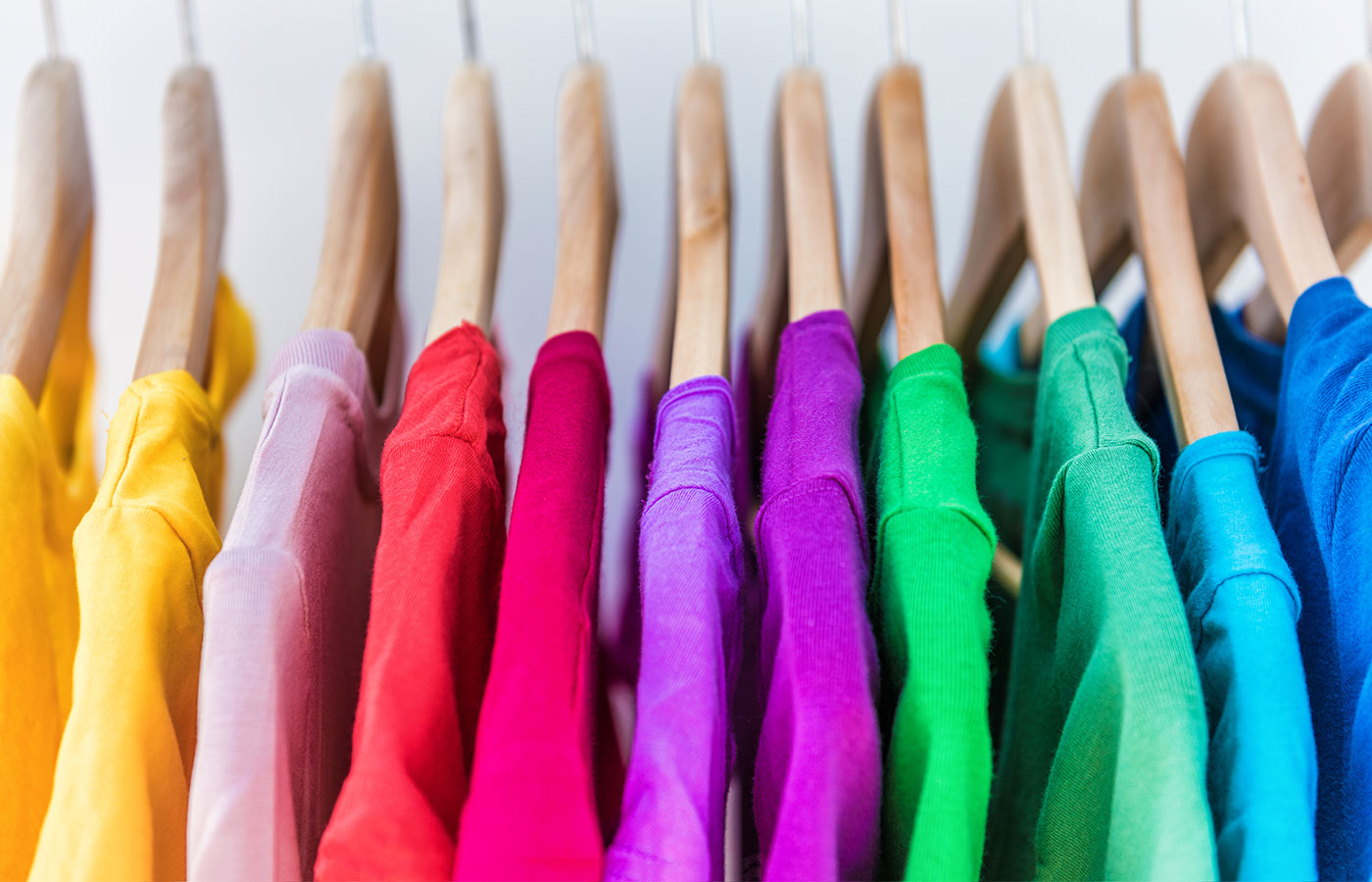Why Fashion Experts Prefer Specific Fabrics in Branded Clothing Lines
Why Fashion Experts Prefer Specific Fabrics in Branded Clothing Lines
Blog Article
Recognizing Apparel: The Relevance of Material Options in Your Closet
The option of fabric in garments plays a pivotal function in both looks and performance. Different products provide differing levels of breathability, convenience, and durability, directly influencing the user's experience. Recognizing these nuances can improve one's wardrobe considerably. Many overlook just how these selections can affect not just individual design, yet likewise sustainability. What textile choices could redefine your closet and straighten it with both design and duty?
The Function of Material in vogue and Performance

Usual Material Kinds and Their Features
When selecting clothing, understanding the features of common material types is important for making notified selections. Cotton, a widely-used natural fiber, is known for its breathability, adaptability, and soft qualities, making it appropriate for informal wear and day-to-day garments. Linen, an additional natural alternative, flaunts outstanding moisture-wicking homes and an unique appearance, suitable for warm climates.Wool, usually preferred for its heat and durability, differs in excellence; merino wool is soft versus the skin, while coarser kinds are made use of for outerwear. Artificial fabrics like polyester and nylon provide resilience and resistance to creases, making them popular for activewear and travel garments. Blends, which integrate synthetic and natural fibers, can enhance capability while maintaining convenience. By recognizing these material attributes, individuals can select clothing that lines up with their way of living and aesthetic preferences.
Breathability and Convenience: Choosing the Right Fabrics for Different Climates
Selecting the ideal materials for different climates can considerably boost comfort and overall wearability. Breathable products are necessary in hot climates, as they enable air blood circulation and dampness evaporation. Fabrics such as cotton, bed linen, and moisture-wicking synthetics efficiently draw sweat away from the body, maintaining the wearer cool and completely dry. Conversely, in colder environments, thicker textiles like wool or fleece offer insulation while keeping breathability, guaranteeing heat without overheating.Additionally, the choice of fabric weight plays an important duty; lightweight fabrics are more suitable for summer, whereas heavier options are matched for winter months wear. Understanding the special properties of each fabric enables people to dress suitably for differing weather problems. Eventually, choosing comfortable and breathable fabrics tailored to details climates can greatly boost everyday comfort and improve the total experience of putting on garments.
Durability and Treatment: Just How Fabric Influences Longevity of Your Wardrobe
Selecting the best products can considerably influence the sturdiness and treatment needs of a wardrobe. Fabrics such as cotton and polyester are understood for their strength and ease of upkeep, making them perfect for day-to-day wear. In contrast, fragile materials like silk and lace need more mindful handling and specialized cleansing methods, which can boost the moment and initiative required for care. Branded Clothing.Durability is likewise influenced by the fabric's weave and finish; securely woven textiles tend to withstand deterioration better than loosely woven options. Furthermore, synthetic blends usually offer boosted resilience, integrating the very best qualities of numerous fibers.Understanding the treatment guidelines for each and every material is essential, as inappropriate washing or drying out can result in premature wear. Eventually, picking resilient products can bring about a longer-lasting wardrobe, reducing the frequency of substitutes and adding to an extra lasting fashion selection
The Effect of Fabric on Fit and Silhouette

Sustainable Material Choices: Making Eco-Friendly Decisions
The impact of fabric expands beyond fit and silhouette to incorporate ecological aspects, motivating a growing interest in lasting fabric options. Environmentally friendly materials, such as natural cotton, hemp, and Tencel, are obtaining grip amongst customers that prioritize sustainability in their closets. These products are usually produced with less chemicals and water, my blog reducing their ecological footprint.Additionally, recycled materials, made from post-consumer waste, supply an innovative service to the fabric sector's pollution trouble. Brands significantly accept openness in their sourcing approaches, permitting customers to make educated decisions regarding their purchases.Choosing sustainable textiles not just sustains honest practices but also urges the fashion sector to adopt more accountable production techniques. As awareness of ecological problems rises, individuals are advised to assess the lasting impact of their fabric choices, fostering a motion towards a much more ecologically mindful and sustainable approach to style.
Raising Style: How Textile Can Change an Attire
While several may concentrate on shade and cut when choosing an outfit, the choice of fabric plays a crucial duty in raising design and boosting total look. Various products share unique state of minds and messages; for instance, silk exhibits luxury and elegance, while jeans provides a laid-back, unwinded ambiance. The texture and drape of a material can dramatically alter the shape, with organized textiles offering a refined look and softer ones creating an extra fluid, loosened up aesthetic.Moreover, the weight of the material influences wearability across seasons. Lightweight textiles like linen and cotton are perfect for summer, while heavier materials such as woollen and velvet give warmth and style in chillier months. Recognizing textile buildings, such as breathability and stretch, additionally encourages individuals to make informed options that improve convenience without compromising style. Inevitably, the ideal fabric can transform an outfit from average to remarkable, making it an important consideration in any closet.
Often Asked Concerns
Exactly how Do I Identify the Textile Web Content of My Garments?
To determine material material, one can take a look at treatment labels, conduct melt examinations for fiber recognition, or consult textile swatches. These methods assist distinguish products, making sure educated selections for clothing care and upkeep in everyday wear.
Can Material Selection Affect My Mood or Confidence?
Textile option can substantially influence an individual's state of mind and confidence. Branded Clothing. Specific products might stimulate feelings of comfort or elegance, while others can really feel uncomplimentary or restrictive, inevitably affecting self-perception and psychological health throughout the day
What Fabrics Are Best for Sensitive Skin?
For individuals with sensitive skin, all-natural materials like bamboo, bed linen, and cotton are typically suggested. These materials are breathable, hypoallergenic, and much less likely to cause irritability, making them appropriate choices for convenience and skin health and wellness.
How Do I Properly Wash and Treatment for Different Fabrics?
To effectively wash and care for different materials, one need to think about each material's specific needs, including temperature level setups, detergents, and drying out approaches, guaranteeing long life and preserving the textile's initial qualities for perfect usage.
Are There Details Fabrics for Athletic or Performance Put On?
Sports or performance wear often uses textiles such as polyester, spandex, and nylon. These materials are created for moisture-wicking, breathability, and versatility, improving activity and comfort during exercises while supplying toughness and assistance. Conversely, in cooler environments, thicker materials like this like wool or fleece give insulation while preserving breathability, making sure heat without overheating.Additionally, the choice of textile weight plays a vital duty; light-weight materials are preferable for summer, whereas larger alternatives are matched for winter season wear. In comparison, fragile products like silk and lace need more careful handling and specialized cleansing approaches, which can boost the time and effort required for care.Durability is additionally affected by the material's weave and surface; firmly woven materials tend to withstand wear and tear much better than freely woven options. In contrast, rigid fabrics can restrict movement however give a timeless, polished look.Moreover, the density and structure of the material can affect the aesthetic understanding of body shape. The impact of fabric extends past fit and shape to encompass ecological aspects, prompting an expanding rate of interest in sustainable material options. The appearance and drape of a textile can significantly modify the silhouette, with structured textiles offering a polished appearance and softer ones producing a more fluid, relaxed aesthetic.Moreover, the weight of the fabric influences wearability across periods.
Report this page